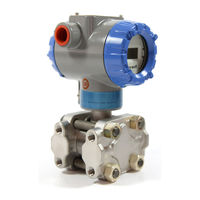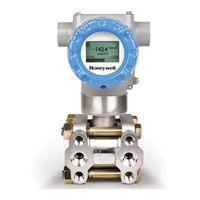Honeywell ST 800 Series Manuals
Manuals and User Guides for Honeywell ST 800 Series. We have 3 Honeywell ST 800 Series manuals available for free PDF download: User Manual, Quick Start Installation Manual
Honeywell ST 800 Series User Manual (128 pages)
Pressure transmitter
Brand: Honeywell
|
Category: Transmitter
|
Size: 4.51 MB
Table of Contents
Advertisement
Honeywell ST 800 Series User Manual (122 pages)
SmartLine Pressure Transmitters
Brand: Honeywell
|
Category: Transmitter
|
Size: 4.09 MB
Table of Contents
Honeywell ST 800 Series Quick Start Installation Manual (24 pages)
Standard
SmartLine Pressure Transmitter
Brand: Honeywell
|
Category: Transmitter
|
Size: 0.98 MB
Table of Contents
Advertisement


